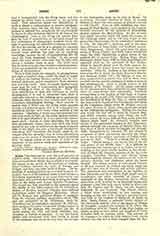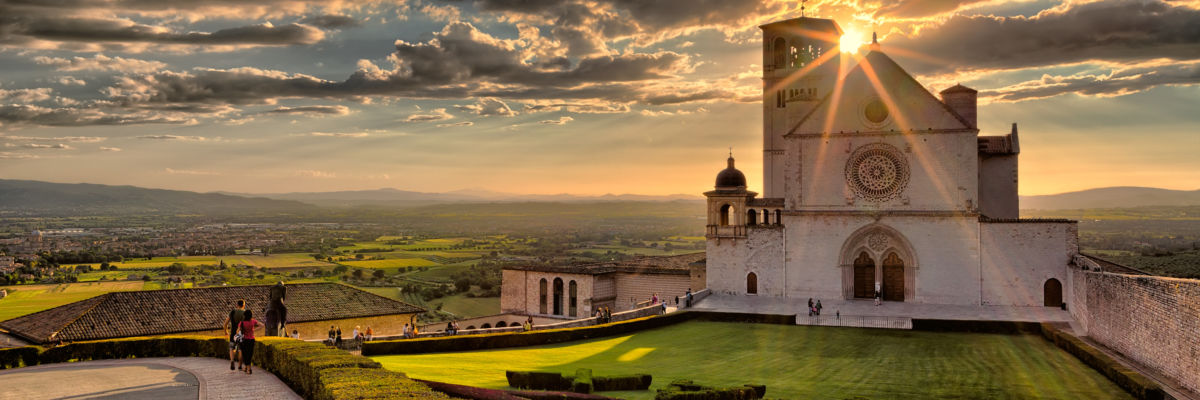

Assisi, the Diocese of, is in the civil province of Umbria, Italy. The town of Assisi (Assisium), which takes its name from Mount Asi, on which it is situated, lies almost in the center of the province of Umbria, about halfway between the cities of Perugia and Foligno, and forty-one miles north of Rome. The beginnings of Assisian history are involved in much obscurity; but in early imperial times it had become a flourishing municipality of no mean importance, and lays claim, with some show of truth, to being the birthplace of the Latin poet Sextus Aurelius Propertius. The Gospel was first preached to the Assisians about the middle of the third century by St. Cyspolitus, Bishop of Bettona (ancient Vettona), who suffered martyrdom under the Emperor Maximian. About 235 St. Rufinus was appointed Bishop of Assisi by Pope St. Fabian; suffered martyrdom about 236; and was succeeded by St. Victorinus. Both St. Victorinus and his immediate successor, St. Sabinus, died martyrs, the latter being most cruelly beaten to death. Of the bishops who occupied the See of Assisi during the fifth and sixth centuries, one, Aventius, is worthy of mention. It was this heroic prelate who interceded (545) with Totila in behalf of the Assisians, and saved the city from the ravages of the Ostrogothic army on its way to Rome. In succeeding centuries mention is made of several Bishops of Assisi who were present at general councils of the Church. Thus, in 659, Aquilinus was summoned by Pope Martin I to be present at the Lateran Council, convened for the purpose of formulating decrees against the Monothelites. In the seventh and eighth centuries Assisi fell under the power of the Lombard dukes, and in 773 was razed to the ground by Charlemagne for its determined resistance to him. He restored it, however, and at the same time all traces of Arian belief and Lombard sympathies disappeared. About the same time the great castle, or Rocca d’Assisi, was built, which stronghold made the town thenceforth a great power in the political life of central Italy. Bishop Hugo; whose episcopate lasted from 1036 to 1050, transferred the episcopal chair to the cathedral of San Rufino, which he himself raised over the little oratory beneath which the Saint’s bones had rested for eight centuries. From St. Rufinus to the present incumbent of the See of Assisi, the Right Reverend Monsignor Ambrose Luddi, O.P., the bishops of that see have numbered some ninety-two; but of these some are little known, and the existence of others is more or less problematical. Assisi is chiefly famous as the birthplace of St. Francis. All the places sanctified by his presence have been preserved in their original state or transformed into sanctuaries. Foremost among these is the basilica of Our Lady of Angels, erected on the model of St. Peter’s at Rome through the beneficence of Pope St. Pius V, which shelters the famous little chapel of the Porziuncula, the cradle of the Franciscan Order, where St. Francis received the great Perdono d’Assisi, more commonly known as the Portiuncula Indulgence. Within this basilica also stands the tiny cell in which St. Francis died, and which contains among other things the well-known statue by Luca della Robbia made after the Saint’s death mask. St. Francis’s remains now repose in the patriarchal basilica of San Francesco, erected through the exertions of Brother Elias, the first stone of which was laid by Gregory IX, July 25, 1228. Consecrated by Innocent IV, this church is composed of three sanctuaries, one over the other, and is one of the earliest specimens of Gothic architecture in Italy. “There is nothing like it”, says Taine. “Before seeing it one has no idea of the art and genius of the Middle Ages.” It is difficult to overestimate the stimulus given to Italian art by the building of this great double basilica, in the decoration of which the foremost painters of the day were engaged, including Cimabue and Giotto, whose famous mystical frescoes, illustrative of the vows of poverty, chastity, and obedience, adorn the lower church. The recent revival of widespread interest in all that concerns St. Francis has made Assisi the goal of a new race of literary and artistic pilgrims. The splendors and associations of the basilicas of San Francesco and Santa Maria degli Angeli tend to overshadow the other churches of Assisi. The cathedral of San Rufino, mentioned above, which dates from 1140, is noted for its beautiful facade and possesses a font (the only one in Assisi) in which not only St. Francis and St. Clare, but the Emperor Frederick II was baptized. The Chiesa Nuova, a Greek cross, surmounted by five cupolas and standing on the site of St. Francis’s parental house, was built at the expense of Philip III of Spain, in. 1615. Santa Chiara, a splendid Gothic church of the thirteenth century, due to the genius of Filippo, di Campello, contains the remains of St. Clare, the cofoundress with St. Francis of the Poor Ladies, or Clares, as they are now called, and daughter of Count-Favorino Scifi, an Assisian noble. The convent of St. Damian’s. in which the holy abbess lived, stands without the city and is little changed since her day. Aside from the churches and convents, perhaps the most interesting monuments in Assisi are the remains of the temple of Minerva, a striking reminder of the Roman period, and the renowned castle known as the Rocca Maggiore, dating, as it seems, from Charlemagne‘s time, and affording a magnificent panorama of Assisi and its vicinity. The population of the town numbers now about 3,750.
PRESENT STATUS: The Diocese of Assisi now comprises four municipalities in the civil province of Perugia (Umbria), besides twenty-six small hamlets and villages, each, with the exception of Porziano, having its church and resident priest. There are 3 educational institutions for boys, with 206 pupils; and 1 episcopal seminary, with 28 seminarists. There are 64 secular priests, and 125 priests of religious orders; while the faithful of the diocese number 28,500. There are 8 monasteries of men and 18 convents of nuns. The churches, chapels, and oratories in the diocese number 190, with 35 parishes in all. The Diocese of Assisi is immediately subject to the Holy See, a privilege which it has enjoyed from remote antiquity.
STEPHEN DONOVAN


